Whether you are wiring your entire home for ethernet or you need a single run of Ethernet cable, Cat 6 and its younger “cousin” Cat 6A will probably be your best friends if you are not sure which type of Ethernet cable to use. They are cheap, reliable, and can support ten-gigabit Ethernet speeds.
Cat 6 Ethernet cable is one of the most convenient data cables that you can get today, and for most typical home installations using these cables will be more than sufficient.
In this guide, we will explain all the nuances of Cat 6 cables, how they work, and what to pay attention to when buying them.
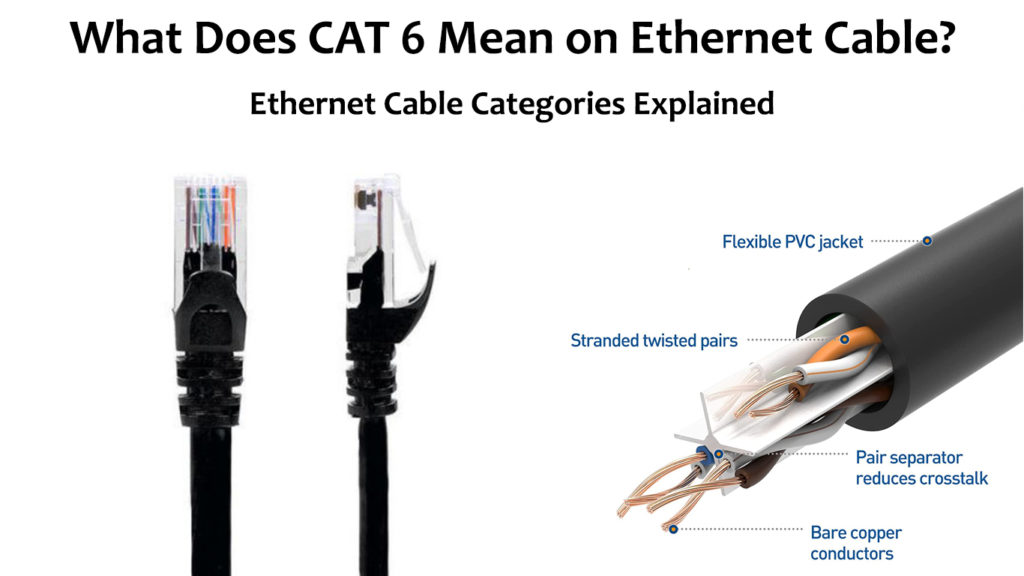
CONTENTS
- How to Recognize a Cat 6 Cable?
- What’s the Difference Between Cat 6 and Cat 6A?
- Is Cat 6A Better Than Cat 6?
- Is Cat 6 Better Than Cat 5e?
- Is Cat 6 Ethernet Cable Good for PoE (Power over Ethernet)
- What Is the Purpose of the Spline and Ripcord in a Cat 6 Cable?
- Which Connectors Are Used for Cat 6 Cable?
- What Is a Shielded Cat 6 Cable?
- Cat 6 vs. Cat 7 vs. Cat 8
- Is Cat 8 Better Than Cat 6 or Cat 6A?
- Cat 6 Ethernet Cable Pinout (T568A vs T568B)
- Is Copper Clad Aluminum Cat 6 Cable Any Good?
- What is A Flat Cat 6 Ethernet Cable?
- Is Cat 6 Cable Good for Gaming?
- Can I Use Cat 6 Cable to Connect My Smart TV to The Internet?
- What to Look for When Buying a Cat 6/6A Ethernet Cable?
- Best Cat 6 Ethernet Cables to Buy Right Now
- 1. Best for The Budget: Fast Cat Cat6 Ethernet Cable
- 2. Best Cat 6 Patch Cable: Cable Matters Snagless Shielded Cat6A Ethernet Cable
- 3. Best Outdoor-Rated Cat 6 Cable: trueCABLE Cat6A Direct Burial Waterproof Ethernet Cable
- FAQ
How to Recognize a Cat 6 Cable?
Cat 6 cable is easy to recognize – it is a twisted pair ethernet cable consisting of four twisted pairs of copper wires (which can be stranded or solid).
The most distinctive part of Cat 6 and Cat 6A cables is the spline that separates the twisted pairs from each other. This spline runs through the center of the cable, and it has a shape of a cross (if you take a look at the flat cut of the cable).
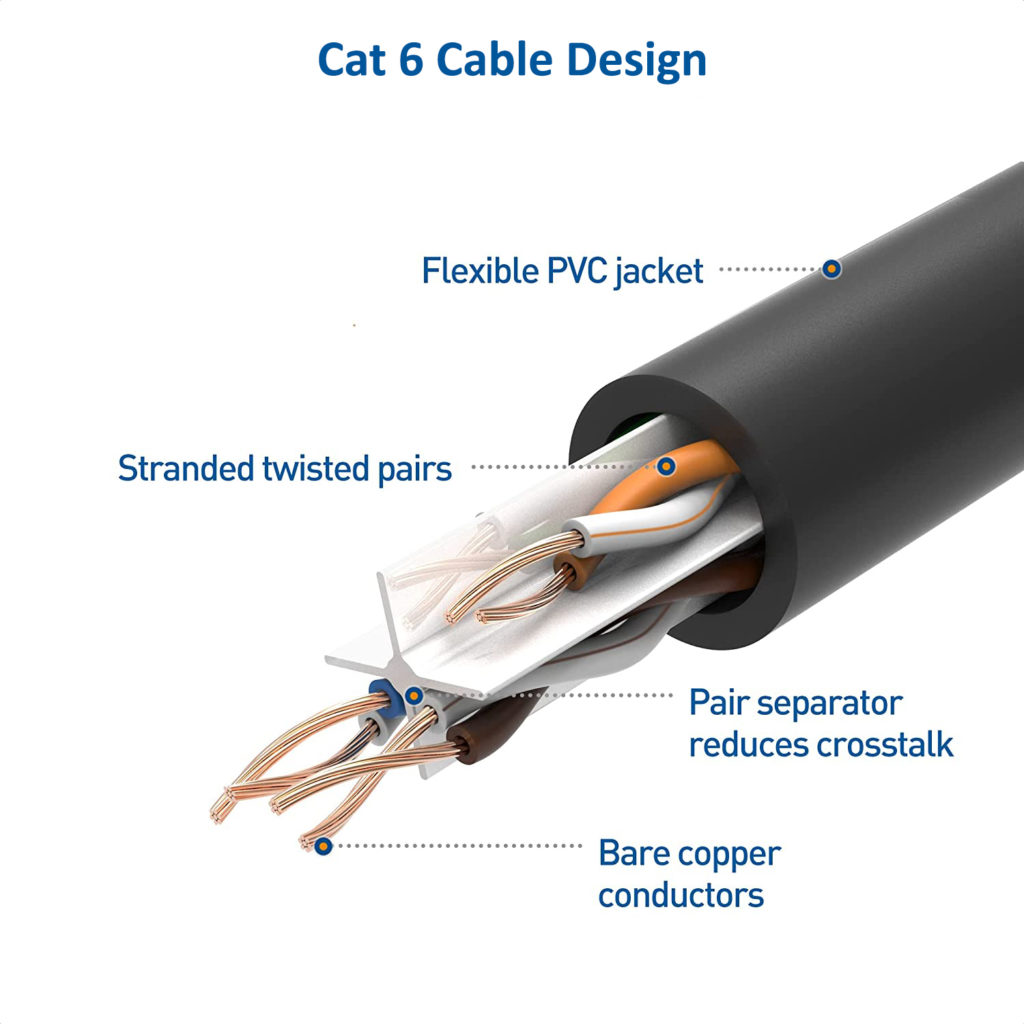
The spline can be made from different kinds of materials, but its main purpose is to act as an additional insulator between the four pairs. It acts as shielding from inner crosstalk. This spline is, besides tighter twists, the main difference between Cat 6 and the older Cat5e cable.
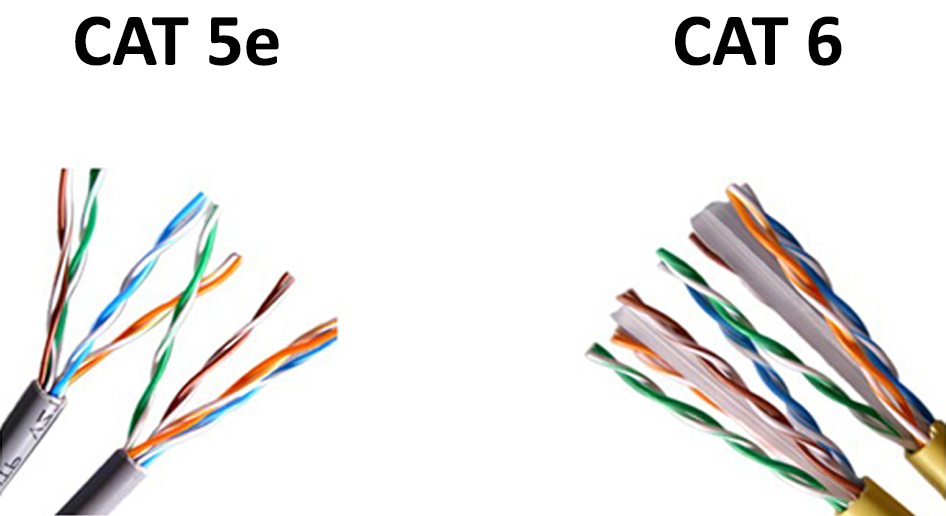
“CAT 6” is the most common marking used on these cables, and it is short for the full standard name: “Category 6”.
What’s the Difference Between Cat 6 and Cat 6A?
Cat 6A is a younger cousin of Cat 6. This means that they are different types of Ethernet cables but still share a lot of similarities regarding their design and structure. Both of these cable types look similar from the inside. The most notable part of the inner design – the nylon spline – is present in both of these cables.
However, Cat 6A cable has tighter twists on twisted pairs, which improves the shielding from the crosstalk, and this is one of the main reasons why Cat 6A is rated for 10 Gbps speeds for distances up to 100 meters (compared to Cat 6, which can do 10 Gbps up to 55 meters). Also, Cat 6A has a higher operating frequency range of up to 500 MHz.
Is Cat 6A Better Than Cat 6?
Well, for regular home usage, the difference will probably be very hard to notice. Most home installations will not require runs longer than 55 meters anyways. The price difference between these two is also insignificant, so it will usually cost you only a couple of cents more (per foot) to have a Cat 6A cable. But the bottom line is that both Cat 6 and Cat 6A will work just fine for home-grade installations.
Is Cat 6 Better Than Cat 5e?
Cat 5e cable is a bit older type of Ethernet cabling that is still widely used for wiring homes for Ethernet and is still considered a decent networking cable. However, Cat 6 or Cat 6A are definitely a better and more future-proof choice nowadays.
Cat 5e was originally rated for data transfer speeds of up to 1 Gbps and an operating frequency range up to 100 MHz. However, thanks to the emergence of the NBASE-T 802.3bz Ethernet standard in 2016, Cat 5e cables can achieve speeds up to 2.5 Gbps.
On the other hand, Cat 6 cable is rated for speeds of up to 10 Gbps at distances of up to 55 meters and 5 Gbps up to 100 meters, with an operating frequency range of 0-250 MHz. Cat 6A can do full 10 Gbps over 100 meters with a frequency range of up to 500 MHz.
So, obviously, Cat 6 (as well as Cat 6A) cables would be a better choice.
One good reason to rather use Cat 6 or Cat 6A instead of Cat 5e for wiring your home is that this kind of installation would be way more future-proof.
This is simply because gigabit-speed internet has already become widely accessible, and the technology that supports it can easily be upgraded to a five-gigabit or even ten-gigabit network at affordable prices.
So, while Cat 5e cable could seem just fine to all of us who still think that gigabit-internet speeds are insane and we will never need more than that, this might quickly change within just a couple of years, and replacing permanent wiring installations can be painful.
Therefore, if you are wiring your home for Ethernet, there is probably no reason not to use at least Cat 6 or Cat 6A cabling.
Will Internet Become Much Faster in The Future
Is Cat 6 Ethernet Cable Good for PoE (Power over Ethernet)
Standard Cat 6 and Cat 6A cables are fully compatible with all of the PoE standards. So essentially, a good Cat 6 cable should always work well for powering your devices over ethernet.
However, this is not always the case because there are “fake” Cat 6 cables on the market which have conducting wires made out of copper-clad aluminum. These cables are not only fake in terms of most likely not meeting the data transfer speed standards, but they are also very dangerous when used for PoE. Copper-clad aluminum melts easily, which can pose a serious danger if used for powering devices over ethernet.
Why You Should Avoid CCA Ethernet Cables
https://www.youtube.com/watch?v=MEo0_HvUqFg
A good rule of thumb to follow when choosing a cable for PoE is to make sure it has a solid conducting core cable, a smaller AWG rating, and a higher temperature rating. You might also want to have a shielded cable for this kind of application for better heat management.
So, while all of these mentioned specs can be found in standard Cat 6 cables, you might want to pay extra attention to some of these if you plan to power some devices over the Ethernet.
What Is the Purpose of the Spline and Ripcord in a Cat 6 Cable?
One of the main features of Cat 6 and Cat 6A cables is the inner shielding between the twisted pairs, which comes in the form of a nylon spline.
Basically, the spline is what makes Cat 6 cable different from Cat 5e – it helps significantly reduce the inner crosstalk between the twisted pair, and this is one of the main reasons Cat 6, and Cat 6A cables can work with higher data transfer speeds.
The spline is an essential part of a Cat 6 and Cat 6A cable. If you find a Cat 6 cable that doesn’t have this spline inside or has a flat nylon tape between the pairs that does not separate each pair properly, then this is not a true Cat 6 cable and will most likely not perform up to the standards. One of the reasons why such cables are still sold is that most home-grade devices do not fully support the speeds, which would make it obvious to the buyers that these are not the real Cat 6 cables.
Recommended reading:
- Does Xfinity Voice Require a Special Modem? (Everything You Need to Know About Xfinity Voice Compatible Modems)
- What is the Most Powerful Outdoor Wi-Fi Range Extender? (A Complete Guide to Outdoor Wi-Fi Extenders)
- What Is A Dual-Band Router? (Introduction to Dual-Band Routers)
Some Ethernet cables will have a ripcord inside. One of the main purposes of the ripcord is to use it as a tool to rip the PVC jacket from the inside by pulling it.
This can reduce the risk of damaging the insulation around conducting wires if you use a cutting tool for stripping the cable. However, this ripcord can also act as additional support to the overall structure of the cable and can make the cable tougher (for situations when the cable is pulled through walls, etc.).
Which Connectors Are Used for Cat 6 Cable?
All standard twisted-pair Ethernet cables are terminated with RJ-45 connectors or keystones.
Essentially, all RJ-45 connectors are of the same size from the outside, but they can be very different from the inside regarding their overall shape or how they are meant to be installed. For example, higher-end ethernet cables are usually terminated with shielded RJ-45 connectors, and the shielding is often gold-plated.
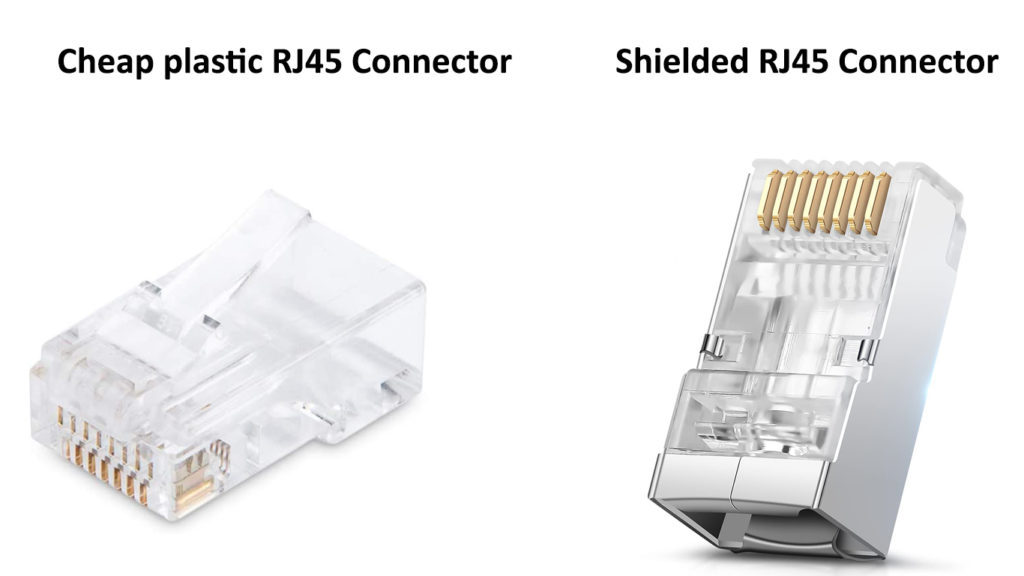
If you don’t feel like using the crimping tool for terminating your ethernet cables, you can use so-called field termination plugs, which are tool-free RJ-45 connectors and can be terminated with just a simple cutting tool like scissors or knife.
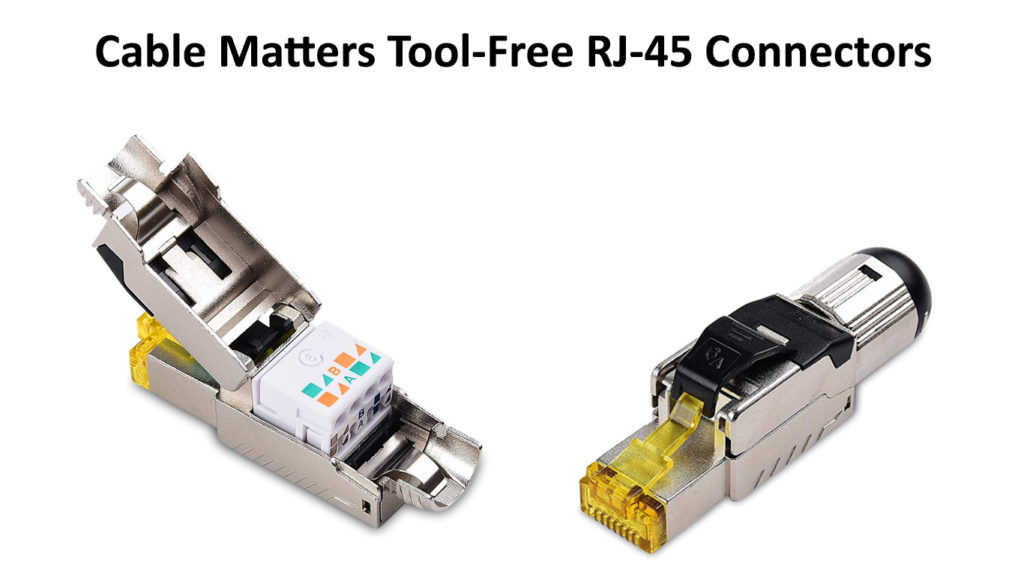
So, for a Cat 6 (and Cat 6A) cable, you can use any RJ-45 connector, i.e., whichever suits you the best. But, if you have a shielded version of a Cat 6 cable, you might also want to make sure you use shielded connectors.
What Is a Shielded Cat 6 Cable?
Ethernet cables can be shielded with different kinds of shielding. Cat 6 and Cat 6A do not have outer shielding by default, but you can find shielded ones if you need them.
A shielded twisted pair ethernet cable can perform better than an unshielded one in certain situations. For example, it’ll perform better in areas where there is a higher chance of electromagnetic interference from the other nearby devices.
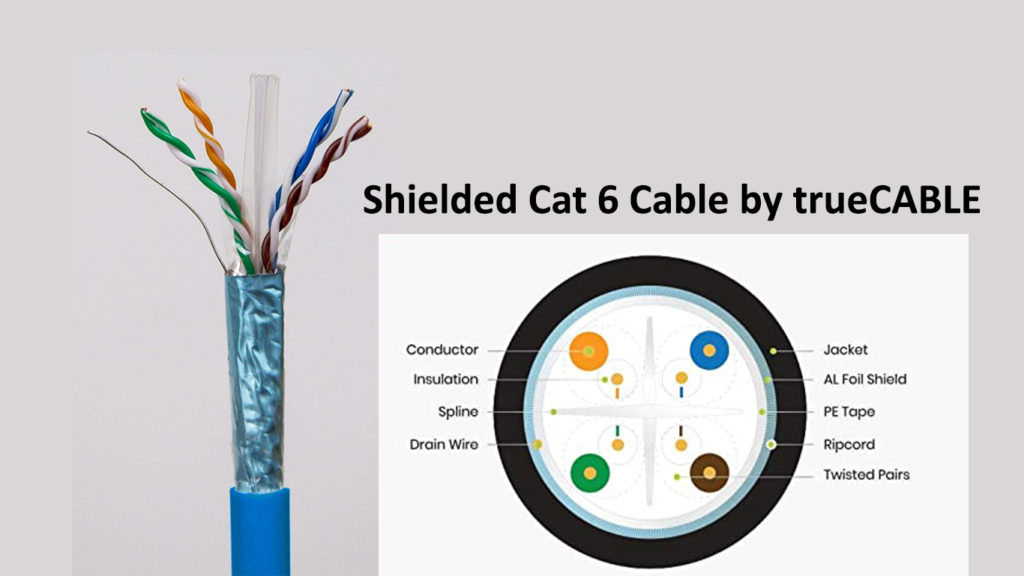
Shielded Cat 6 and Cat 6A cables usually have only outer shielding in the form of braided metal or aluminum foil (or both). The additional inner shielding is usually not applicable to Cat 6 and Cat 6A cables as they already have the spline to separate the twisted pairs from each other.
If you are using a shielded Ethernet cable, you need to ensure the grounding connection works well on both ends. Shielded Ethernet cables are grounded only on one end. Also, shielded Ethernet cables require shielded RJ-45 connectors.
A fully shielded Ethernet cable that has both outer braided metal or aluminum foil shielding, as well as the inner foil shielding around each pair, is usually marked as S/STP (sometimes marked as S/FTP), while a cable that only has outer shielding is marked as STP.
Cables that have a foil as an outer shielding will be marked as FTP (sometimes marked as F/UTP), and the ones that are shielded with braided metal will be marked as STP (sometimes marked as S/UTP).
Alongside the outer shielding, there is also a drain wire that is electrically connected with the shielding across the cable, and it is used for grounding the cable.
For most home installations, a shielded cable is not really necessary, but there are several cases where this kind of Cat 6 or Cat 6A cable can come in handy. For example, if you need to have an outdoor run of an Ethernet cable (like connecting a surveillance camera) and you want that cable to be grounded, this is the case where you would want to have a shielded Ethernet cable.
Also, in some areas, proximity to certain devices or facilities where electromagnetic interference is more likely to happen can have a weird effect on how your unshielded ethernet cable works (like causing a false split pair error). So, if your ethernet cable acts weirdly and drops connection randomly, replacing it with a fully shielded cable might save your day.
How to Terminate Shielded Cat 6 or 6A Ethernet Cable with an RJ-45 Connector
Cat 6 vs. Cat 7 vs. Cat 8
Cat 6 and Cat 6A ethernet cables can be considered a sweet spot when it comes to choosing between the different available ethernet cable types – they support high-speed data transfers (up to 10 Gbps), they are pretty sufficient even for higher-end networking solutions, and they sell at an affordable price.
However, if 10-Gigabit data transfer speed doesn’t sound like enough, there’s the Cat 8 cable. Cat 8 cable is rated for up to 40 Gbps data transfer speeds for runs that are up to 30 meters, and the operating frequency range is up to 2000 MHz. It is a fully shielded cable and usually terminated with shielded, gold-plated RJ-45 connectors.
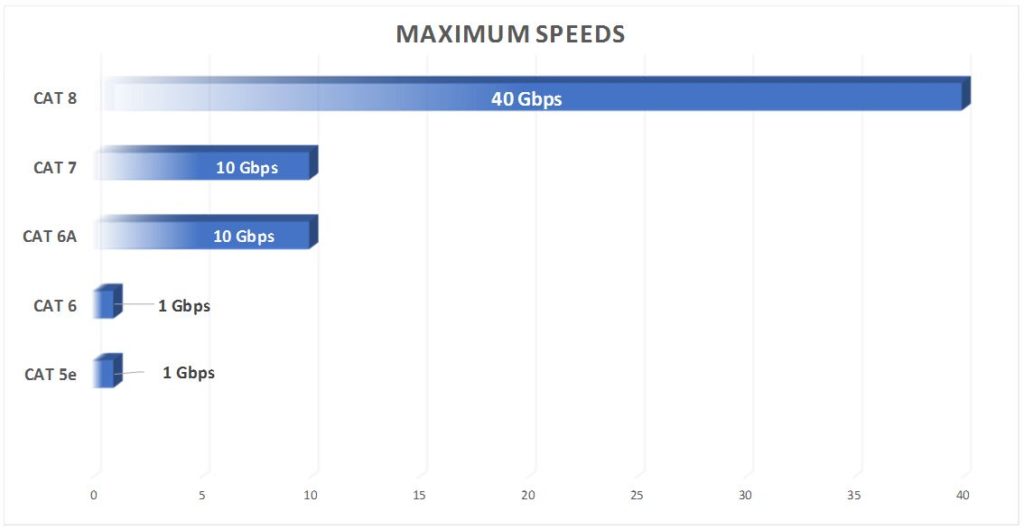
Is Cat 8 Better Than Cat 6 or Cat 6A?
Definitely yes. However, it is also a bit pricey compared to Cat 6 and Cat 6A. The price per foot for a good Cat 8 cable can be up to ten times (or more) higher than what you would pay for Cat 6 or Cat 6A.
Currently, with 1 Gbps and 2 Gbps internet connection speeds, the difference between these two would be hardly noticeable, and it would make more sense to use Cat 6 or Cat 6A cabling.
However, the main question when choosing between Cat 6 and Cat 8 cables for wiring your home is how fast the internet will become in the future. Even though a 40-Gigabit internet speed sounds like science fiction, we might have these speeds sooner than expected.
Note, though, that a cabling upgrade might not necessarily be required even in case of such an increase in consumer-grade internet speeds – future improvements to the other Ethernet technologies can make older cables suitable for higher speeds.
But, if you are not an avid gamer or streamer, Cat 6 cabling and a 10-Gigabit ethernet should be more than sufficient for a very long time.
Another widely sold ethernet cable is Cat 7. However, Cat 7 is not a standard cable, and there’s a lot of uncertainty regarding what you get when you buy a cable with that marking on it. Some Cat 7 cables can be better than Cat 6 / Cat 6A cables (because they are usually fully shielded), but still, the difference is insignificant for regular home applications. In most cases, the best practice for wiring home would be to go with Cat 6/6A or Cat 8.
Is There a Difference Between Cat 6 and Cat 8 Ethernet Cables
Cat 6 Ethernet Cable Pinout (T568A vs T568B)
Twisted pair Ethernet cables (including Cat 6) connect to RJ-45 connectors on their ends.
There are two versions of pinouts used to install RJ-45 connectors on ethernet cables: T568A and T568B.
Essentially both of these pinouts are a valid way to make your ethernet cables, and the only difference is the color of the wires attached to certain pins.
The T568A pinout uses white-green and green for the first two pins and white-orange and orange for the third and sixth pins. On the other hand, the T568B pinout puts white-orange and orange at the first two pins and white-green and green at the third and sixth pins.
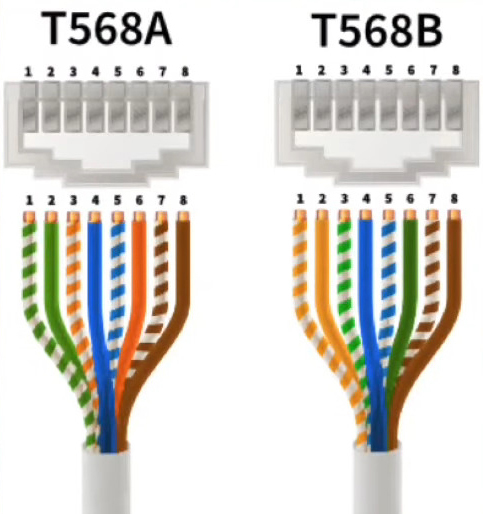
These two pinouts will have no impact on the performance of the cable whatsoever, but you need to make sure that you don’t mix these on the same cable. You can use any of these pinouts as long as you apply the same one on both cable ends.
T568A VS T568B – What’s the Difference and Which to Use?
Is Copper Clad Aluminum Cat 6 Cable Any Good?
One of the first things you might want to pay attention to when checking a Cat 6 cable is the material used for the conducting core.
All Ethernet cables are supposed to have solid or stranded copper conducting cores. However, plenty of ethernet cables on the market are sold as Cat 6 or Cat 6A cables, but they don’t meet these standards.
Copper-clad aluminum is one of the most common “alternative” materials used in “fake” Ethernet cables for conducting wires.
This material, besides the fact that it doesn’t meet the standards, is also highly dangerous when the cables are used for PoE technology.
Copper-clad aluminum has a low melting point and can be a true fire hazard if used for powering devices over Ethernet. Thus, you should make sure the cable is not made of this material and does not have a CCA marking on it.
The main reason why some manufacturers make cables like this is that copper-clad aluminum is way cheaper than copper.
What is A Flat Cat 6 Ethernet Cable?
Flat Ethernet cables do not really meet the standards, and this is especially the case with the Cat 6 cables as they need to have the inner shielding between the pairs in the form of a spline.
Even though some flat Cat 6 cables can perform well in certain situations, there is no special reason to use them instead of the regular Ethernet cables.
They could be easier to handle and install in tighter spaces, but they can be more sensitive to electromagnetic interference than the standard cable just because of the flat design.
The bottom line is that flat Ethernet cables might look fancy, but they do not comply with the standards, so you might want to avoid using them.
Flat VS Regular Ethernet Cable
Is Cat 6 Cable Good for Gaming?
Cat 6 or Cat 6A, whichever of these cables you decide to use for connecting your gaming device to the internet, you can’t go wrong with them.
The most critical part of internet connection for gaming is the latency and all standard Ethernet cables will perform extremely well when it comes to that.
Cat 5e VS Cat 6 Ethernet Cable for Gaming
Can I Use Cat 6 Cable to Connect My Smart TV to The Internet?
Yes, both Cat 6 and Cat 6A cables will perform very well for connecting your video streaming devices to the internet.
These cables support a 10-Gigabit data transfer speed, which means they can handle a lot of video streaming over the same cable. So, if you are wiring your home and want to have multiple TVs connected to the internet in your home, either of these cables should be a good choice and will work well with multiple-Gigabit internet connections.
What to Look for When Buying a Cat 6/6A Ethernet Cable?
When buying a Cat 6 or Cat 6A cable, the first thing to check is if it’s a real or fake cable. As mentioned above, copper-clad aluminum cores are used in non-standard Ethernet cables, and this is definitely something to avoid when buying an Ethernet cable for many reasons. A good Cat 6 or Cat 6A Ethernet cable should always have pure copper as a material used for the conducting cores.
Another thing to decide when it comes to the conducting core is whether you want to go with a solid or stranded core cable. Cat 6 and Cat 6A cable wires are either made of solid or stranded copper core – you might want to use solid core cables if you are setting up a permanent installation.
Stranded core cables are more used as patch cables, for example, when connecting your smart TV to the ethernet outlet or directly to the router. Also, if you plan to use the PoE (Power over Ethernet) feature, solid core cables will perform better.
If you plan to run your cable in plenum spaces, you should be looking for a properly rated cable. The outer jacket used in regular non-plenum Cat 6 and Cat 6A cables can release toxic fumes if exposed to fire. Therefore, for plenum spaces, you need to ensure that you use cables that have a proper rating for this kind of use.
If you need to have an outdoor run of an ethernet cable, you should make sure that the cable is at least rated as UV-resistant. Ethernet cables that are not outdoor-rated can react when exposed to the sunlight for a longer time – the outer PVC jacket can lose its plasticity and will start to degrade.
When buying a Cat 6 cable, you can also check the AWG of the conducting wires. Usually, 23-gauge wires are used within Cat 6/6A cables, but there are Cat 6 and Cat 6A cables with thinner conducting cores. A lower AWG rating means a thicker conducting core. If you plan to have PoE devices on your Ethernet network, you might want to use a cable that has thicker conducting wires.
If you want better protection from outer crosstalk, you might want to get a shielded Cat 6 cable. Note that shielded ethernet cables need to be properly terminated with shielded connectors. You might also want to make sure your cable is properly grounded on one end to avoid performance issues – shielded cables that are not properly used, terminated, and grounded can actually perform worse than unshielded ones.
Finally, the length of the cable still matters. Cat 6A is rated for 10 Gbps speeds up to 100 meters, and Cat 6 can do these speeds for runs that are up to 55 meters.
The Effect of Cable Length on the Overall Performance of an Ethernet Cable
RouterCtrl.com is reader supported. If you buy something using the links on our site, we may earn a small commission.
Best Cat 6 Ethernet Cables to Buy Right Now
1. Best for The Budget: Fast Cat Cat6 Ethernet Cable
If you are looking for a bulk ethernet cable for wiring your home, this Cat 6 cable is a good quality cable that sells at around 18 cents per foot.
It is a solid core Cat 6 cable with a nominal operating frequency range of 550 MHz. It has a thick conducting core (23 AWG), fully made of solid copper.
This is a regular unshielded and riser-rated (CMR) Cat 6 cable suitable for regular home installations.
The promised nominal operating frequency of up to 550 MHz should make this cable perform similarly to a Cat 6A cable.
If you are picky regarding the colors, this one sells in ten different colors.
2. Best Cat 6 Patch Cable: Cable Matters Snagless Shielded Cat6A Ethernet Cable
If you need a high-end patch cable to connect your smart TV, PC, or other devices to the internet, this Cat 6A cable has a lot to offer.
It is a fully shielded cable (S/STP, S/FTP) which means that it has both – the outer shielding (braided metal), and inner aluminum foil shielding for each of the pairs. This is something that you don’t usually see in Cat 6 or Cat 6A cables but rather in higher-end cables like Cat 8.
It is a 26 AWG, stranded core cable with conductors made of bare copper. It comes with shielded connectors and gold-plated pins.
3. Best Outdoor-Rated Cat 6 Cable: trueCABLE Cat6A Direct Burial Waterproof Ethernet Cable
If you need to run your cable outdoors, in wet areas, or bury it into the ground without a conduit, this trueCABLE Cat 6A cable can handle it all.
It is a fully outdoor-rated cable, UV-resistant, waterproof, individually tested with a proper cable analyzer (Fluke DSX-8000 Versiv), and comes with a lifetime warranty.
This is an unshielded Cat 6A cable with 23 AWG solid conducting cores made of bare copper.
FAQ
Q: What is Ethernet?
A: Essentially, Ethernet is a family of numerous networking technologies that make it possible for multiple devices to create a wired network connection – LAN (Local Area Network) or WAN (Wide Area Network).
Ethernet was invented in 1973, and back in its early days, there weren’t Ethernet cables that we use today and refer to as “ethernet cables”. Actually, the first cables used for Ethernet were mostly coaxial cables. This was until 1987 when twisted-pair Ethernet cables were introduced, with the release of the IEEE 802.3e standard.
IEEE 802.3e is just one of many IEEE 802.3 standards that are used to standardize Ethernet technologies. For example, the IEEE 802.3ab version of the standard (released in 1999) made it possible to achieve up to 1 Gbps data transfer speed over a twisted pair cable (1000BASE-T).
Q: What is an Ethernet cable?
A: Ethernet cable connects multiple devices into a wired ethernet network.
One important thing to know (especially if you would like to learn more about the possibilities of Ethernet) is that coaxial cables and fiber optic cables can also be used for Ethernet. For example, you can achieve data transfer speeds of 400 Gbps or even more over Ethernet if you use fiber optic cables. However, twisted pair cables are the most popular cables used for ethernet wiring.
Modern Ethernet technologies mainly rely on twisted pair and fiber optic cables, while coaxial cables are less commonly used.
Q: Why do Ethernet cables have twisted wires?
A: Twisted pair cables are used as Ethernet cables. Cat 5e, Cat 6, Cat 7, and Cat 8 are all twisted-pair cables, and they are very similar in their design. Twisted pair cables consist of 4 pairs of twisted wires. The reason why these pairs are twisted is to avoid and protect from electromagnetic interference. Therefore, this design acts as a kind of shielding, thus allowing for higher quality connection and data transfer speeds carried out through these cables.
Q: Do all Cat 6 cables have a spline?
A: Yes, all Cat 6 and Cat 6A cables should have a thick nylon spline that properly separates all of the twisted pairs from each other. If the cable does not have a proper spline, then it does not meet the actual standards of Cat 6 and Cat 6A cables.
Q: What is a Cat 6e cable?
A: Cat 6e is not a recognized standard by TIA/EIA; therefore, the interpretation of what this marking exactly means is left to the manufacturer. For example, some manufacturers will claim that their Cat 6e is rated for a frequency range of up to 600 MHz and is more suitable for data centers. While some of this can be correct (the operating frequency of the cable can be increased with tighter twists), Cat 6e is still considered a marking that some cable manufacturers came up with deliberately.

Hey, I’m Jeremy Clifford. I hold a bachelor’s degree in information systems, and I’m a certified network specialist. I worked for several internet providers in LA, San Francisco, Sacramento, and Seattle over the past 21 years.
I worked as a customer service operator, field technician, network engineer, and network specialist. During my career in networking, I’ve come across numerous modems, gateways, routers, and other networking hardware. I’ve installed network equipment, fixed it, designed and administrated networks, etc.
Networking is my passion, and I’m eager to share everything I know with you. On this website, you can read my modem and router reviews, as well as various how-to guides designed to help you solve your network problems. I want to liberate you from the fear that most users feel when they have to deal with modem and router settings.
My favorite free-time activities are gaming, movie-watching, and cooking. I also enjoy fishing, although I’m not good at it. What I’m good at is annoying David when we are fishing together. Apparently, you’re not supposed to talk or laugh while fishing – it scares the fishes.

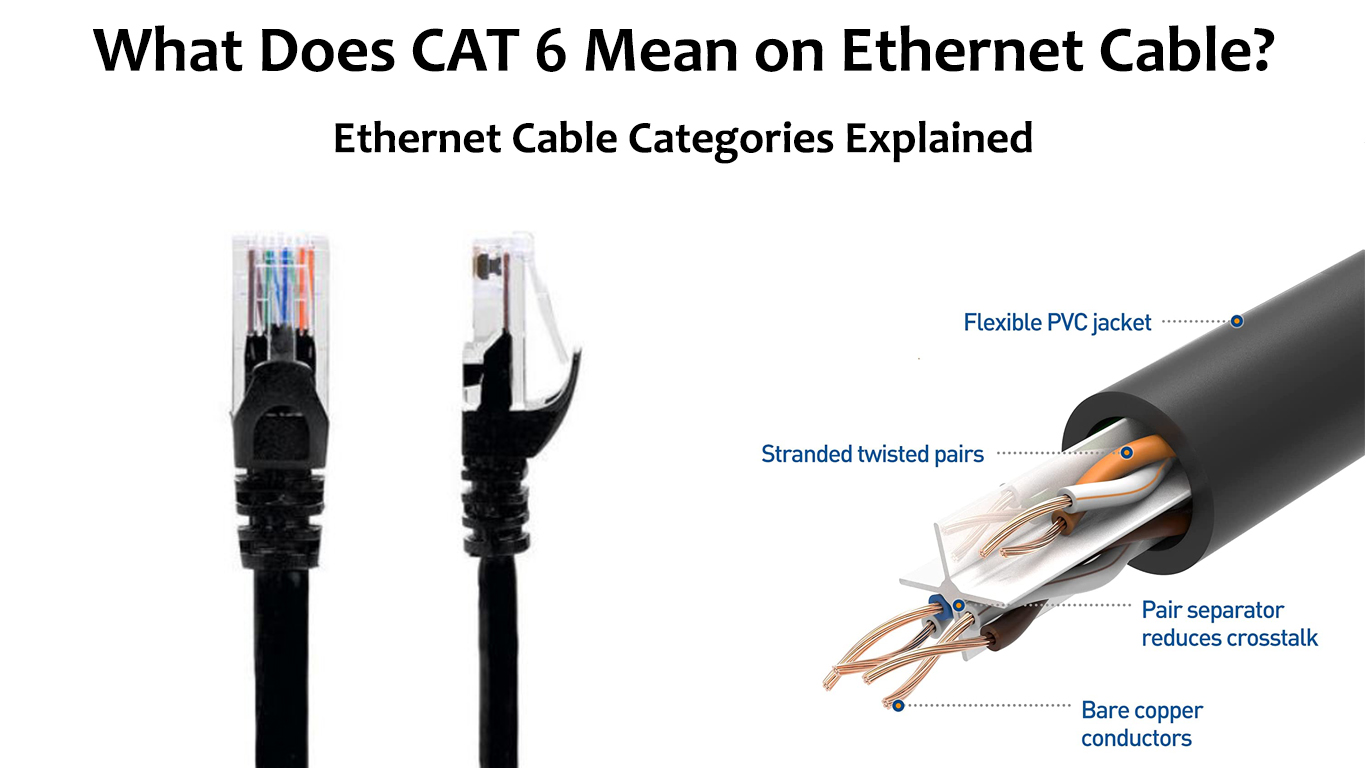



Upgrade your network infrastructure with Cat6 cables in bulk! Get faster speeds, greater bandwidth, and reliable connectivity. Buy now and save big!